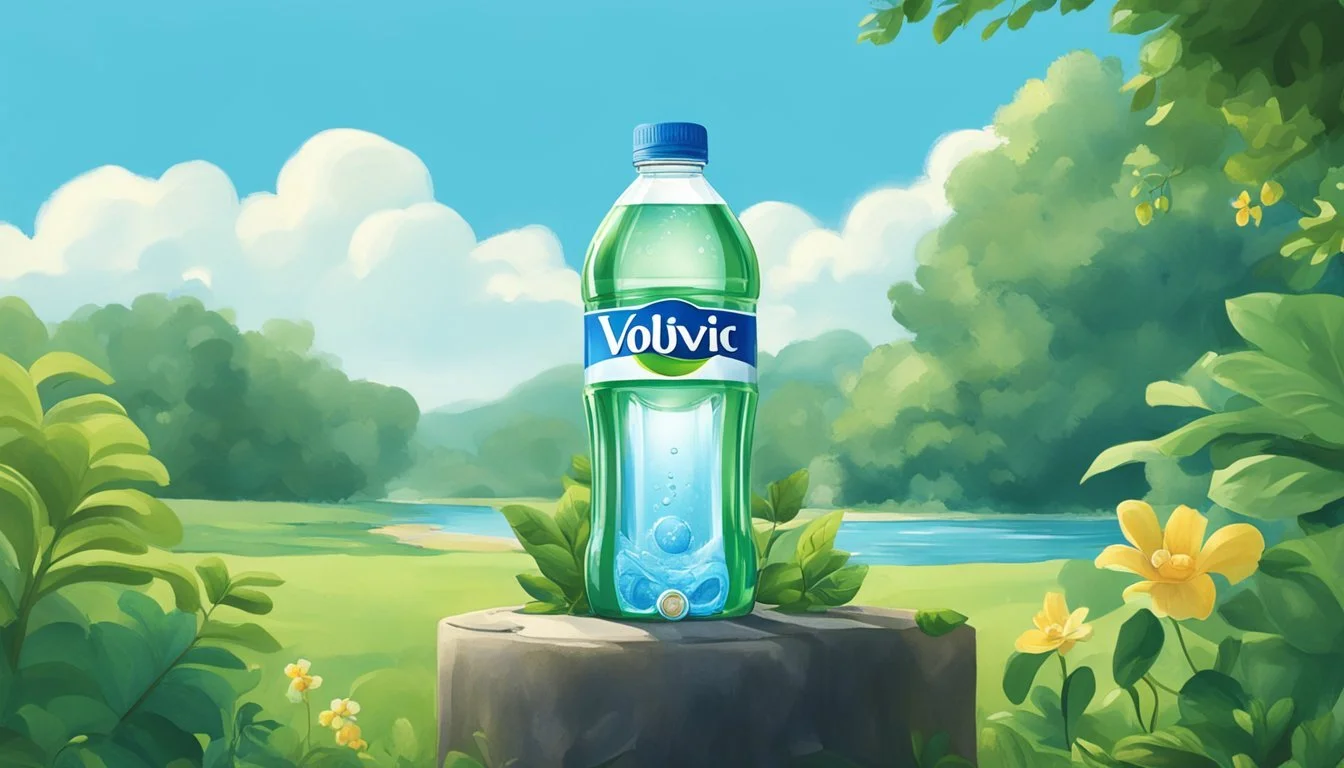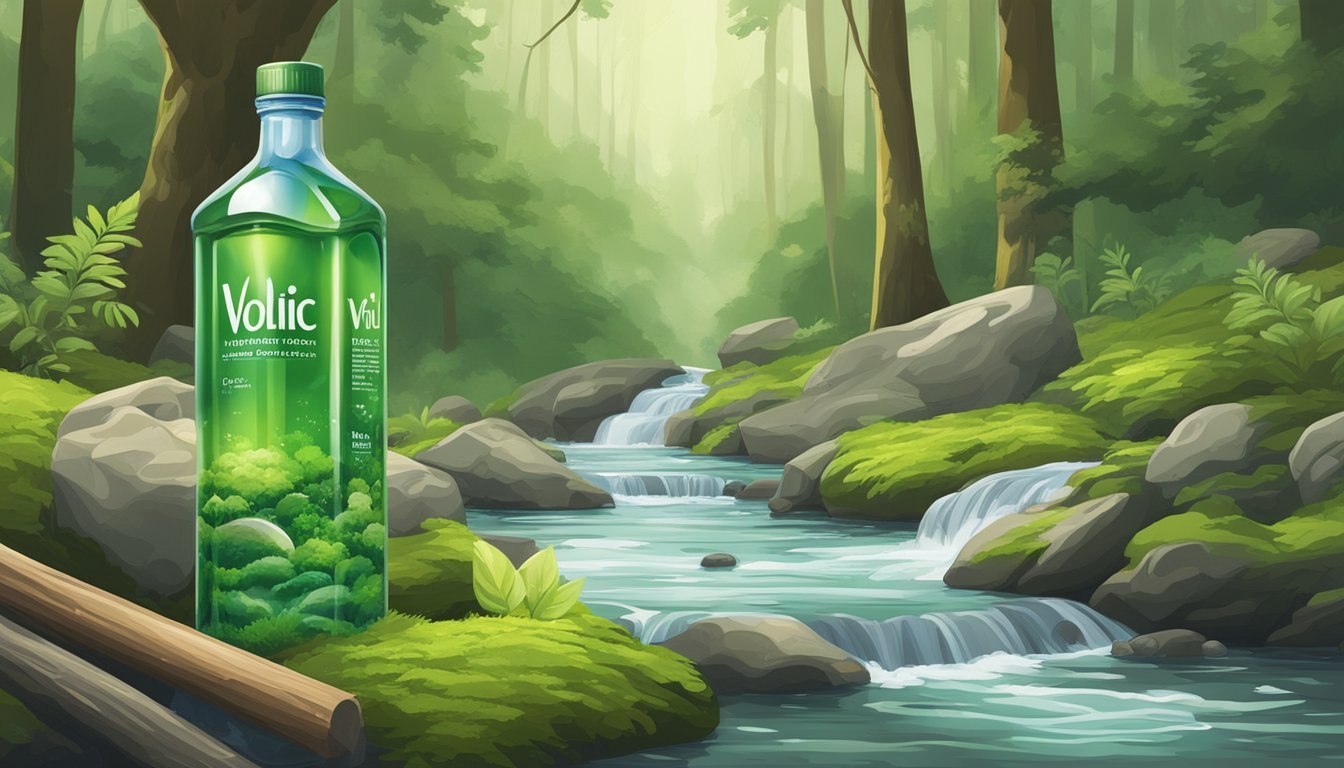Volvic vs. The Well
Which Bottled Water is Better for You?
When choosing bottled water, two names that often come up are Volvic and The Well. Consumers are increasingly aware of what's in their water and appreciate transparency from brands. Volvic stands out because it offers slightly alkaline water, which some believe aids in better hydration. This is due to its pH typically ranging from 7.0 to 7.5.
On the other hand, The Well prides itself on its purity and sustainable practices. It’s sourced from protected environments and claims to offer a crisp and clean taste without any noticeable aftertaste. For individuals prioritizing sustainability, The Well's eco-friendly packaging is an attractive feature.
Both brands have their merits. Volvic's alkaline nature and established reputation make it a solid choice for those focused on hydration. The Well, however, appeals to environmentally-conscious consumers who do not want to compromise on taste or quality.
Evaluating Bottled Water Quality
When comparing bottled water like Volvic and The Well, it is essential to examine quality assurance and safety standards, mineral content, and the taste profile to determine which offers better value.
Quality Assurance and Safety Standards
Quality assurance and safety standards are fundamental in ensuring bottled water is safe for consumption. In the United States, the Environmental Protection Agency (EPA) oversees tap water, while the Food and Drug Administration (FDA) regulates bottled water. Bottled water companies must comply with standards for contaminant levels, including lead and bacteria.
Volvic adheres to stringent standards in Europe and the U.S., meeting all regulatory requirements to ensure safety. The Well also meets these safety standards. Regular testing and certifications by third-party labs help verify the purity and safety of these water brands. Consumers should look for these certifications to ensure they are choosing a reliable product.
Mineral Content and Health Benefits
Mineral content in bottled water affects both taste and health benefits. Water brands like Volvic and The Well can vary significantly in their total dissolved solids (TDS), which include minerals like calcium, magnesium, and potassium.
Volvic, sourced from volcanic regions in France, is known for its balanced mineral content. This contributes to its smooth taste and potential health benefits, such as supporting bone health.
The Well, depending on its source, may also contain beneficial minerals. Alkaline water variants from The Well offer potential benefits like neutralizing body acidity, though scientific support for these claims varies. Consumers with specific dietary needs should consider the mineral profile to make a more informed choice.
Taste Profile and Purity
Taste and purity are subjective yet crucial factors in choosing bottled water. The taste is influenced by the mineral content and source. Volvic is renowned for its clean and crisp taste, thanks to its natural filtration through volcanic rock, which enhances its purity.
The Well’s taste can differ based on the water source. Some variants might offer a more robust taste if they are mineral-rich, while others might be subtler and purer. Ensuring minimal contaminants and absence of any plasticky taste are also significant for most consumers. Both brands undergo rigorous purification processes to ensure a high purity level, making them trustworthy choices for consumers prioritizing taste and purity.
Understanding Water Sources
Water sources vary significantly between brands, influencing taste, purity, and environmental impact. Key differences exist between spring water and purified water, each with unique sourcing and processing methods.
Spring Water vs. Purified Water
Spring Water is collected from natural springs, where water flows to the surface. Brands like Volvic source their water from an ancient volcanic aquifer, offering minerals picked up during the natural filtration process through volcanic rock.
Purified Water undergoes extensive treatment to remove impurities. This process often includes distillation, deionization, or reverse osmosis. Brands like The Well may use municipal sources and refine the water to meet stringent purity standards.
When comparing spring water to purified water, consider the natural mineral content and potential environmental contaminants removed during purification. Spring water often retains natural minerals beneficial to health, while purified water may have additives like electrolytes to mimic mineral water's composition.
Environmental Impact of Water Sourcing
The environmental impact of sourcing water is critical. Brands sourcing spring water must protect the natural environment to ensure the sustainability of their source. Volvic, for instance, emphasizes sustainable practices to maintain the integrity of its volcanic aquifer.
On the other hand, sourcing purified water can involve treating municipal water supplies, reducing the need for tapping into natural sources. The Well might utilize advanced purification techniques, which can be more energy-intensive, but potentially lessen the strain on natural water reserves.
Understanding these processes helps consumers make informed choices about their water preferences, weighing both health benefits and environmental considerations.
The Brands and Market Presence
Volvic and The Well are prominent bottled water brands, each with a unique market presence. This section explores how these brands compare in terms of consumer preferences and market dynamics.
Popular Brands and Consumer Preferences
Volvic, sourced from the volcanic region of France, is often chosen for its mineral content and perceived purity. Brands like Evian, Fiji, and Voss share a similar reputation for quality and origin, catering to a premium market segment.
The Well provides spring water, appealing to those who prefer a natural source. Its presence is notable but less widespread compared to global giants like Dasani and Aquafina. Nestlé Pure Life remains a staple for consumers seeking accessibility and affordability, reflecting diverse consumer preferences.
Market Dynamics and Bottled Water Market Trends
The bottled water market continues to grow, driven by health trends and convenience. Brands such as Coca-Cola's Dasani and Nestlé have capitalized on this demand, offering varied products from purified to flavored water.
Volvic and The Well compete by emphasizing sustainability and health benefits. Voss's sleek packaging and Fiji's exotic source drive their popularity among consumers seeking a premium experience. Essentia appeals to the fitness-conscious with its ionized alkaline water.
Emerging trends include a focus on eco-friendly packaging and increased consumer awareness around environmental impacts. Brands that adapt to these trends maintain an edge in the competitive bottled water market.
Packaging and Sustainability
Volvic and The Well use distinct packaging practices that carry different implications for environmental sustainability. This section examines their use of plastic bottles and alternative packaging, as well as recycling initiatives aimed at reducing their carbon footprint.
Plastic Bottles and Environmental Concerns
Volvic's primary packaging consists of plastic bottles. While convenient and lightweight, these bottles contribute significantly to plastic pollution. The environmental impact of plastic bottles includes the extensive carbon footprint generated during production, widespread littering, and the long degradation period required for plastic to break down naturally.
The Well, on the other hand, prioritizes glass bottles for its packaging. Glass is fully recyclable and does not degrade in quality over multiple uses. Although glass production is energy-intensive, its recyclable nature offers a more sustainable option when compared to single-use plastic. Moreover, glass bottles do not leach chemicals into the water, enhancing both health and environmental benefits.
Alternative Packaging and Recycling Initiatives
Volvic has made efforts to increase the sustainability of its packaging by incorporating recycled plastic into its bottles. Additionally, the brand actively promotes recycling programs to encourage consumers to dispose of bottles responsibly. These initiatives are aimed at reducing the overall environmental burden associated with their products.
The Well takes a different approach by exploring boxed water packaging solutions. Boxed water involves cartons made from a mix of sustainable materials such as paper, aluminum, and plastic film. These cartons have a significantly lower carbon footprint compared to traditional plastic bottles and are more renewable. Moreover, The Well participates in initiatives to improve the recycling rates of these cartons, ensuring that the packaging contributes less waste to landfills.
Health and Hydration
When comparing Volvic and The Well bottled waters, it’s essential to focus on hydration efficiency and how each brand aligns with health-conscious lifestyles. Differences in electrolytes and source purification can affect overall health benefits.
Electrolytes and Hydration Efficiency
Volvic water is sourced from the Auvergne region of France, known for its natural volcanic filtration. This process naturally enriches the water with minerals, including electrolytes like calcium and magnesium, which aid in maintaining electrolyte balance.
The Well, on the other hand, markets itself as offering "ultra-purified" water, often using advanced purification methods to remove impurities. Such processes might strip some natural electrolytes but may add back electrolytes artificially to enhance hydration efficiency.
The balance of electrolytes in both brands is crucial for optimal hydration. While Volvic provides naturally occurring electrolytes, The Well's reintroduction of electrolytes serves to ensure similar benefits. Choosing between them depends on personal preference for natural versus processed water.
Water and Health-Conscious Lifestyles
For those leading health-conscious lifestyles, factors like pH levels and source purity are significant. Volvic boasts a low mineral content with a pH level around 7, ideal for those who prefer minimally mineralized water. This can be beneficial for daily hydration without the concern of excess mineral intake.
Conversely, The Well emphasizes its ultra-purified nature, often accompanied by claims of sophisticated filtration techniques. This can appeal to consumers focused on purity and safety from contaminants. Though it may lack natural alkalinity, The Well still meets hydration needs efficiently.
Both brands cater to different aspects of a health-conscious lifestyle. Volvic supports those who value natural mineral content, while The Well appeals to those prioritizing purity and controlled ingredients.
Chemical Composition and Treatment
Both Volvic and The Well offer distinct experiences in terms of chemical composition and treatment processes, impacting their respective purity and quality. The key factors include the mineral content, treatment methods, and contaminant removal.
Natural vs. Enhanced Water
Volvic is classified as natural mineral water, drawn from the Clairvic Spring in France. Its mineral content, including calcium, magnesium, and bicarbonates, is naturally occurring and unaltered.
In contrast, The Well employs processes to enhance its water. This often includes the addition of minerals like electrolytes for taste and health benefits. The differences in content may cater to different consumer preferences, with some seeking natural purity and others desiring enhanced hydration benefits.
Treatment Methods and Contaminant Removal
Volvic water undergoes minimal treatment to preserve its natural state. Collected directly from its volcanic source, it is bottled using an automated system that ensures no external contamination, maintaining its high purity.
The Well uses advanced treatment technologies like reverse osmosis and microfiltration. These processes eliminate a wide range of contaminants, including lead, arsenic, and chlorine, ensuring ultra-purified water. Additional treatments like ultraviolet light enhance water safety by killing potential microorganisms.
Both brands have rigorous quality controls. This ensures they meet safety standards while appealing to different consumer needs for natural mineral composition or highly purified water.
Comparative Analysis
Volvic and The Well offer distinct characteristics in terms of taste, mineral content, and environmental impact. This analysis will help identify which brand stands out in these key areas for consumers.
Volvic vs. The Well: A Direct Comparison
Taste Profile and Mineral Content:
Volvic is known for its smooth taste derived from filtering through volcanic rock. This process enriches Volvic with minerals such as silica, calcium, and magnesium. Volvic maintains a slightly alkaline pH, often between 7.0 and 7.5.
The Well prides itself on a crisp, clean taste. Its water sources contribute a distinctive blend of trace minerals, including significant amounts of potassium and other electrolytes.
Nutritional Content:
Volvic’s mineral content is marked by higher levels of silica, beneficial for skin and hair health. The Well, on the other hand, contains a balanced mix of calcium, magnesium, and potassium, essential for overall body function.
Environmental Impact:
Both brands use plastic packaging, but their recycling efforts vary. Volvic focuses on sustainability through environmentally-friendly initiatives. The Well also emphasizes sustainable practices, but further details about their environmental initiatives would draw more comparison insights.
Consumer Insights and Final Thoughts
Consumer Preferences:
Volvic's unique taste appeals to those who value a mineral-rich profile with a slight alkalinity. Consumers often appreciate the smooth texture thanks to its volcanic rock filtration, making it a favorite for hydration and health-conscious individuals.
Consumers of The Well enjoy its fresh and clean flavor, citing the balanced mineral composition as a plus for daily hydration needs.
Final Considerations:
When choosing between Volvic and The Well, consumers should weigh taste preferences along with the mineral benefits each brand offers. Volvic suits those seeking a high silica content and slightly alkaline water. The Well is ideal for those who prefer a crisp taste with a balanced mineral profile.
More About Volvic
Mountain Valley Spring Water vs Volvic: Which Bottled Water is Better?
Volvic vs Kirkland Signature: Which Bottled Water is Better?
Volvic vs Richard's Rainwater: Which Bottled Water is Better?
Volvic vs Whole Foods Italian Still Mineral water: Which Bottled Water is Better?
More About The Well
Cascade Mountain vs The Well: Which Bottled Water is Better?
Hawaiian Springs vs The Well: Which Bottled Water is Better?
Icelandic Glacial vs The Well: Which Bottled Water is Better?
Mountain Valley Spring Water vs The Well: Which Bottled Water is Better?
Nestle Pure Life vs The Well: Which Bottled Water is Better?
Richard's Rainwater vs The Well: Which Bottled Water is Better?
The Well vs Kirkland Signature: Which Bottled Water is Better?
The Well vs Talking Rain AQA: Which Bottled Water is Better?
Whole Foods Italian Still Mineral water vs The Well: Which Bottled Water is Better?




